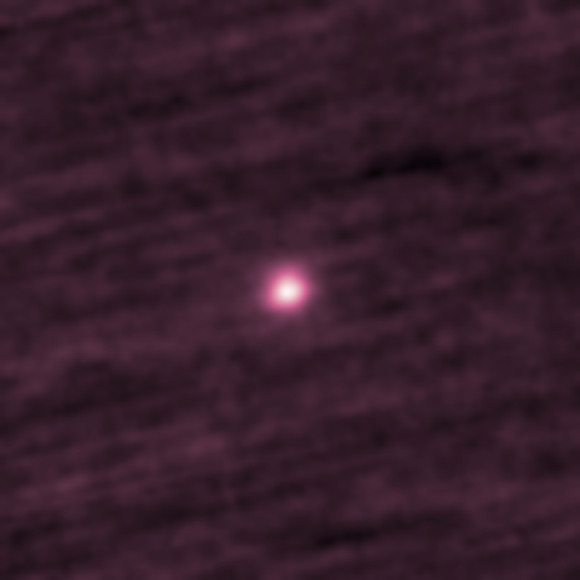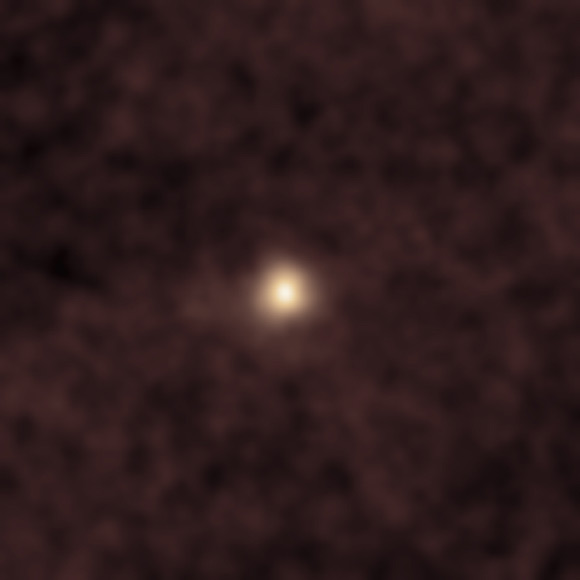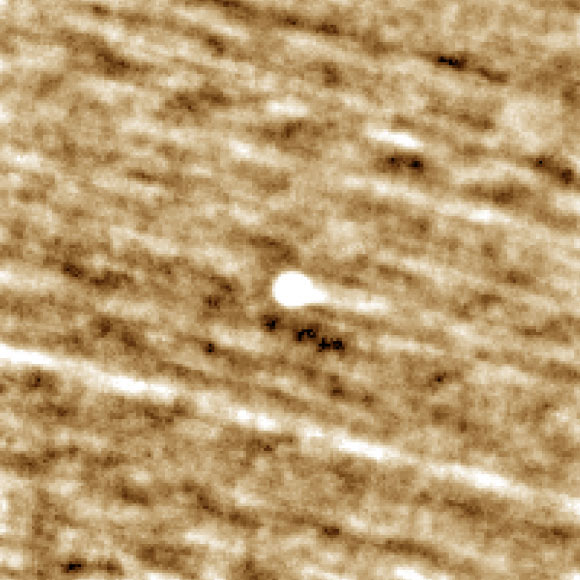NASA’s STEREO (Solar Terrestrial Relations Observatory), the NASA/ESA SOHO (Solar and Heliospheric Observatory), and NASA’s PUNCH (Polarimeter to Unify the Corona and Heliosphere) missions have the unique ability to observe areas of the sky near the Sun, which allowed them to track 3I/ATLAS as it passed behind our Sun as seen from Earth.

Traveling through our Solar System at a staggering 209,000 km (130,000 miles) per hour, 3I/ATLAS was made visible by using a series of colorized stacked images from September 11-25, 2025, using the Heliocentric Imager-1 instrument, a visible-light imager on NASA’s STEREO-A spacecraft. Image credit: NASA / Lowell Observatory / Qicheng Zhang.
STEREO observed the interstellar comet 3I/ATLAS from September 11 to October 2, 2025.
Designed to study the Sun’s activity and its influence across the Solar System, the mission is part of a fleet of NASA spacecraft observing the comet, together providing more information about its size, physical properties, and chemical makeup.
At first, comet 3I/ATLAS was expected to be too faint for STEREO’s instruments to see, but detailed image processing and overlaying (or ‘stacking’) telescope images using the Heliospheric Imager-1 instrument, a visible-light telescope, brought 3I/ATLAS into view.
Stacking and aligning multiple exposures ultimately generated several images where the comet appears as a slight brightening in the center.

This image of 3I/ATLAS combines observations from the NASA/ESA SOHO mission between October 15 and 26, 2025. Image credit: NASA / ESA / Lowell Observatory / Qicheng Zhang.
The SOHO spacecraft captured a glimpse of 3I/ATLAS on October 15-26, 2025.
During this time period, SOHO’s Large Angle and Spectrometric Coronagraph (LASCO) instrument suite spotted the comet crossing its field of view from approximately 358 million km (222 million miles) away, or more than twice Earth’s distance from the Sun.
SOHO orbits the Sun-Earth Lagrange point 1, a region of gravitational balance approximately 1/6 million km (one million miles) closer to the Sun along the Sun-Earth line.
Members of the SOHO team also used the stacking method to generate the image of 3I/ATLAS.

3I/ATLAS appears as a bright object near the center of this image, made from combining observations from NASA’s PUNCH mission taken from September 20 to October 3, 2025. Image credit: NASA / Southwest Research Institute.
PUNCH mission observed 3I/ATLAS from September 20 to October 3, 2025.
The observations revealed the comet’s tail, visible as a slight elongation to the lower right.
The comet was very faint during these observations, so the PUNCH team was not sure whether the spacecraft would be able to see it clearly, as the spacecraft is designed to study the Sun’s atmosphere and solar wind — not comets.
However, stacking multiple observations from PUNCH brought out 3I/ATLAS and its tail.
“We’re really pushing the limits of the system,” said Dr. Kevin Walsh, a planetary scientist at the Southwest Research Institute who led PUNCH’s observations of the comet.







